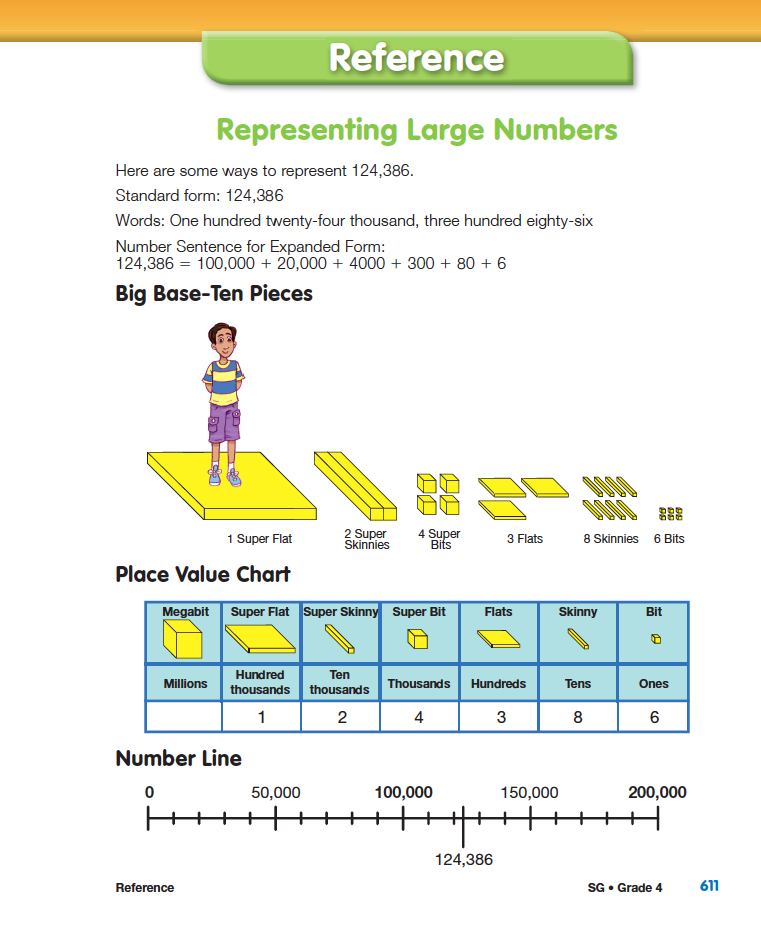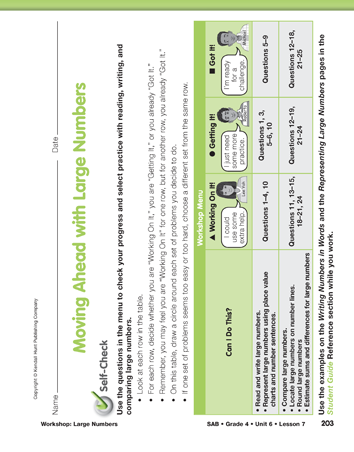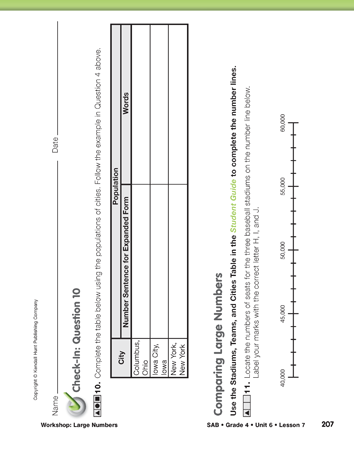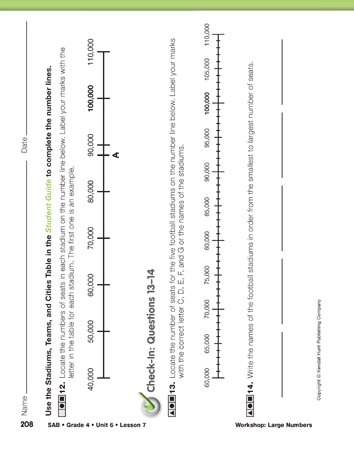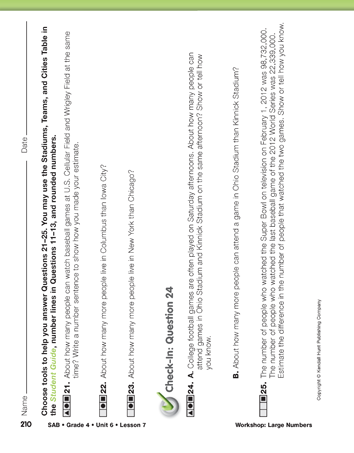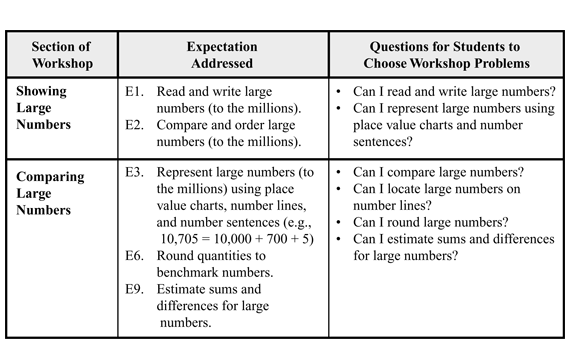Workshop: Large Numbers
Est. Class Sessions: 1–2Developing the Lesson
Part 2: Organizing the Workshop
Set Up the Workshop. Distribute the feedback you prepared for each student on the Big Number Quiz from Lesson 6 or other related assessment tasks. Refer students to the Workshop Menu on the Moving Ahead with Large Numbers pages in their Student Activity Book. Have students think about the questions in the left-hand column of the Workshop Menu. Ask students to review their work, your feedback and other work from previous lessons to decide which problems to choose from the following groups:
- Students who are “working on it” and need some extra help should circle the problem set marked with a triangle (
 ). These problems provide scaffolded support for developing the essential underlying concepts as well as some opportunities for practice.
). These problems provide scaffolded support for developing the essential underlying concepts as well as some opportunities for practice. - Students who are “getting it” and just need more practice should circle the problem set marked with a circle (
 ). These problems mainly provide opportunities to practice with some concept reinforcement and some opportunities for extension.
). These problems mainly provide opportunities to practice with some concept reinforcement and some opportunities for extension. - Students who have “got it” and are ready for a challenge or extension should circle problems marked with a square (
 ). These problems provide some practice and then move into opportunities for extension.
). These problems provide some practice and then move into opportunities for extension.
The workshop is divided into two sections that address Expectations as shown in Figure 2. Minis of the Student Activity Book pages not shown here are in the Answer Key.
Check students' choices to see how well they match your own assessment of their progress on the related Expectation(s). Help students make selections that will provide the kinds of practice they need.
Familiarize students with the representations and examples on the Writing Numbers in Words and Representing Large Numbers pages in the Student Guide Reference section.
Referring to the Representing Large Numbers page, ask:
Remind students to use these reference pages as they complete the workshop tasks. Have copies of the Place Value Chart Master available so students can choose to write the numbers in the chart before they write the numbers in words.
Workshop. Organize students into pairs or groups and ask students to complete the problems they have selected from the menu. The table in Figure 3 provides suggestions for helping individual students based on Expectation and question number.
Minis of the Moving Ahead with Large Number pages from the Student Activity Book not shown here are in the Answer Key.














